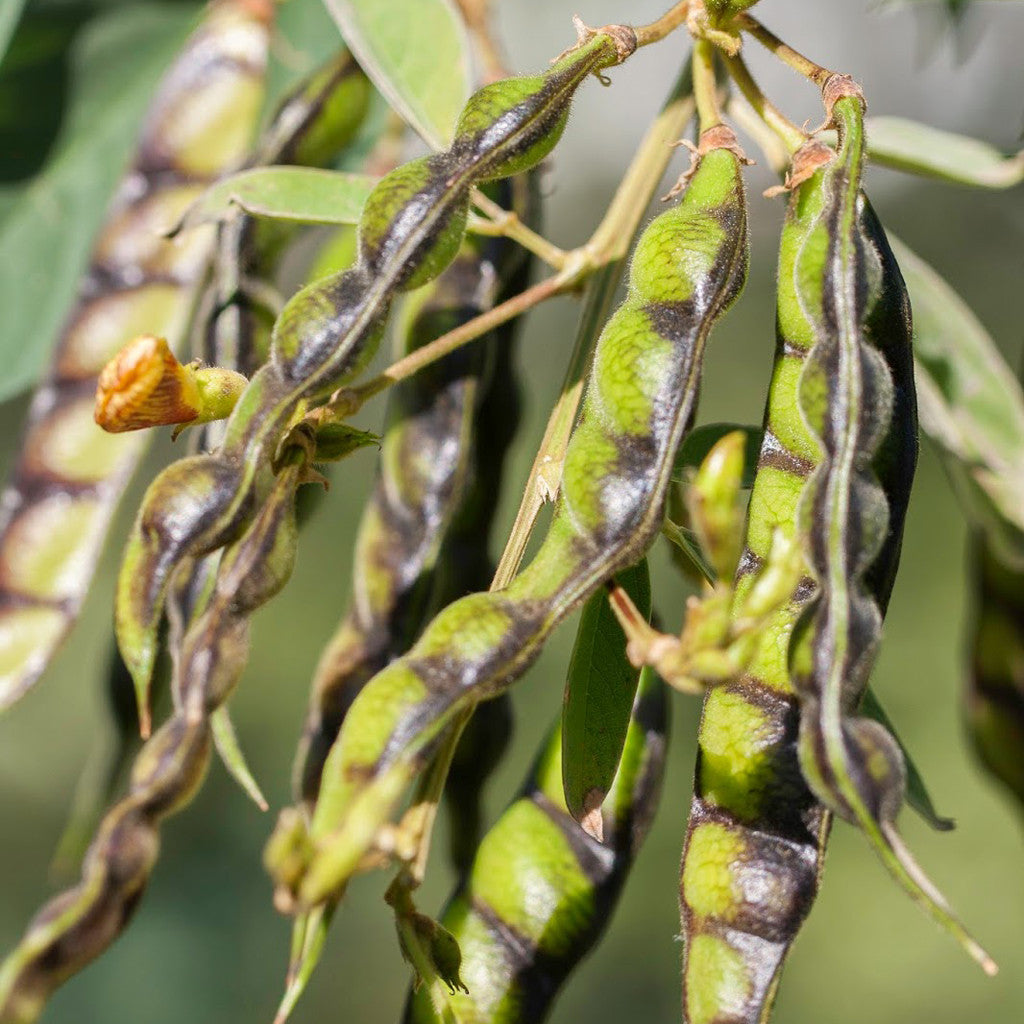Cajanus cajan
Family
Fabaceae
Origin
India
Description
Pigeonpea, Cajanus cajan, is a perennial shrub. Pigeonpea is a highly branched shrub with a woody base, slender stems and trifoliate leaves. The plant leaflets are oblong or elliptical in shape and the leaves are alternate and arranged spirally on the stems. The plant usually produces yellow flowers, but they can be yellow with streaks of purple or red. The flowers are produced on racemes of 5–10 flowers. The seed pods are flat and either straight or sickle shaped and measure 5–9 cm (2–3.5 in) in length. Each pod can contain between 2 and 9 seeds which can be white, cream, brown, yellow, purple or black or mottled with any combination of these colors. Pigeonpea can reach 0.5–4.0 m (1.6–13.1 ft) in height and is usually grown as an annual, harvested after one season. It may also be referred to as red gram or congo pea.
Environment
Pigeon pea grows best in hot humid climates where temperatures are between 18 and 38°C. The plants will grow in a wide range of soils, from sandy soil to clay and also in soils with low fertility. Pigeon pea will grow optimally in a well drained soil with a pH between 5.0 and 7.0. Once established, pigeon pea is relatively tolerant to drought conditions and can survive for long periods with little irrigation.
Pigeon pea is propagated directly from seed which should be sown in a prepared seed bed. Seeds should be planted to a depth of 2.5–10 cm (1–4 in) leaving 30–50 cm (12–20) between plants and 170 cm (60 in) between rows. Higher seeding rates should be used if the pant is being grown for use as a green manure. Pigeon pea is commonly intercropped with millets, cotton, sorghum or groundnut.














